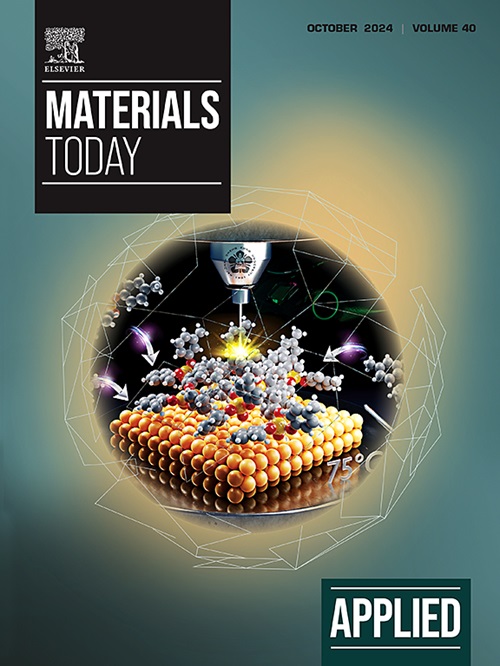具有抗氧化和细胞外基质重建双重功能的改良植入物可调节间充质干细胞衰老
IF 6.9
2区 材料科学
Q1 MATERIALS SCIENCE, MULTIDISCIPLINARY
引用次数: 0
摘要
与正常骨修复相比,老年患者的骨修复能力明显较弱,其主要原因之一是在骨修复过程中起关键作用的骨髓间充质干细胞(MSCs)衰老。因此,我们考虑对骨科植入物进行相应的表面改性,以应对老年患者骨缺损的实际问题。在本论文中,我们在钛基底上制备了负载二甲双胍(Glucophage)的 TiO 纳米管,然后利用壳聚糖-儿茶酚和明胶在其表面逐层自组装,通过消除过多的活性氧(ROS)和重建细胞外基质(ECM)来延缓间充质干细胞的衰老,从而实现成骨。结果表明,在抗氧化剂和ECM重建的双重作用下,衰老相关分泌表型(SASP)生成明显减少,PINK1/Parkin介导的线粒体自噬增强,间充质干细胞细胞内和细胞外ROS水平下降,表明间充质干细胞的衰老程度明显降低。骨生成相关基因的表达和动物切片的染色也证明了这一点。总之,我们的材料确实能通过延缓细胞衰老促进间充质干细胞的增殖和成骨分化,有望为临床解决老年骨缺损患者的组织修复问题提供一种新方法。本文章由计算机程序翻译,如有差异,请以英文原文为准。
Modified implant with dual functions of antioxidant and extracellular matrix reconstruction for regulating MSCs senescence
Bone repair in elderly patients is significantly weaker compared to normal bone repair, and one of the main reasons for this is the senescence of bone marrow mesenchymal stem cells (MSCs), which play a key role in the bone repair process. Therefore, we considered the corresponding surface modification of orthopedic implants to cope with the practical problem of bone defects in elderly patients. In this thesis, we prepared TiO nanotubes loaded with metformin (Glucophage) on Ti substrates, followed by self-assembly layer by layer using chitosan-catechol and gelatin on the surface, to delay MSCs senescence by eliminating excessive reactive oxygen species (ROS) and reconstructing extracellular matrix (ECM), thereby achieving osteogenesis. The results showed a significant reduction in senescence-associated secretory phenotype (SASP) generation, an enhancement of PINK1/Parkin-mediated mitochondrial autophagy, and a decrease in intracellular and extracellular ROS levels in MSCs under the dual effects of antioxidants and ECM reconstruction, suggesting that the degree of senescence in MSCs was significantly reduced. Osteogenesis was also demonstrated by expression of osteogenesis-related genes and staining of animal sections. In conclusion, our material can indeed promote the proliferation and osteogenic differentiation of MSCs by delaying cellular senescence, which is expected to provide a novel approach for clinical solutions to tissue repair problems in elderly patients with bone defects.
求助全文
通过发布文献求助,成功后即可免费获取论文全文。
去求助
来源期刊

Applied Materials Today
Materials Science-General Materials Science
CiteScore
14.90
自引率
3.60%
发文量
393
审稿时长
26 days
期刊介绍:
Journal Name: Applied Materials Today
Focus:
Multi-disciplinary, rapid-publication journal
Focused on cutting-edge applications of novel materials
Overview:
New materials discoveries have led to exciting fundamental breakthroughs.
Materials research is now moving towards the translation of these scientific properties and principles.
 求助内容:
求助内容: 应助结果提醒方式:
应助结果提醒方式:


